Shah Jahan Mosque, Thatta

Thatta (Thatto in local language) is a historical and important city of the Sind Province of Pakistan. The city lies some 100 kilometers east of the Karachi metropolis on the National Highway. With River Indus and the Arabian Sea coast to its west, Thatta was once an important and thriving city and a centre of the then newly thriving religion of Islam. From the 14th century four Muslim dynasties ruled Sind from Thatta, but in 1739 the capital was moved elsewhere and with it Thatta declined. Thatta has a very rich heritage of Muslim architecture during the era of the 16th and 17th century. Although Thatta is known for its history which dates back to some 2000 years, it is also known for the Shah Jahan Mosque - a masterpiece of Mughal construction. This mosque was built by Mir Abdullah on the orders of Mogul emperor Shah Jahan in 1647 A.D. It is said that Shah Jahan built this mosque as a gesture of gratitude to the people of Thatta for sheltering him during his youth after his father, Emperor Jahangir banished him from Delhi.
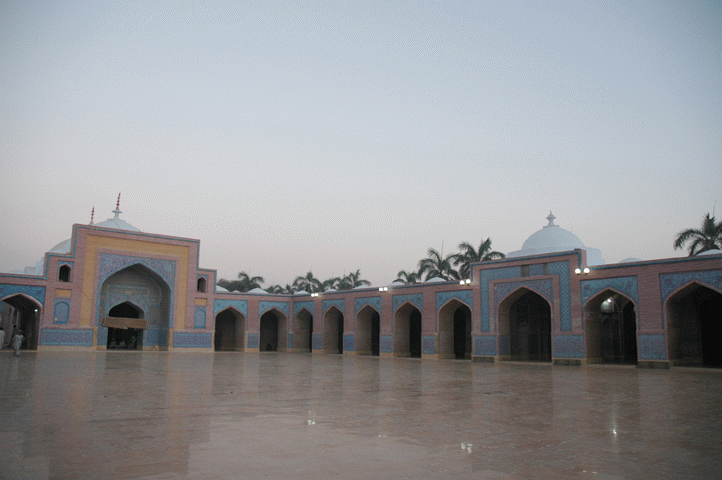

Architecturally unique, Shah Jehan mosque is the first mosque in this region to be constructed according to the principals of Mughal courtyard architecture. As per some Persian inscriptions, the foundation of the mosque were laid in 1644 and mosque was completed in 1647. The floor was paved with stone in 1657.The mosque is a superb example of crafty tile work. Its 93 domes and 33 arches with varying sizes add to their architectural beauty. The domes have been exquisitely laid in a mosaic of radiating blue and white tiles. Its blue tiles and mosaic work are alluring. Red brick is utilized rather than the more commonly seen pink sandstone and marble associated with Mughal buildings.
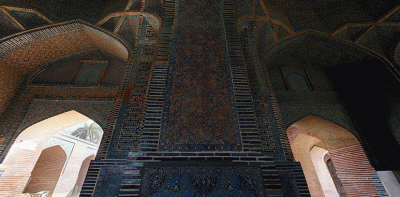
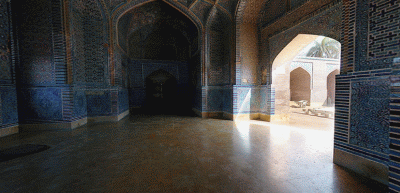
The main entrance of the mosque has a central domed chamber. The mosque has an open central courtyard of about 15,900 square feet. Arcades of red brick arches highlighted with bands of white surround the courtyard. The main entrance is in the eastern portion and the secondary entrances are contained in the north and south portion. The prayer hall has three bays on either side of the central meh-rab chamber. Each bay is covered by a low dome, which adds up to 93 domes. The proportion of the aisle to the low domes enables an acoustic range that in effect allows the prayers read in front of the mihrab to be heard in all parts of the mosque. The mosque is spread over an area of 51,850 square feet.
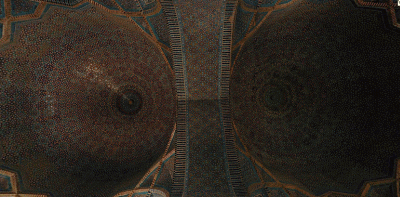
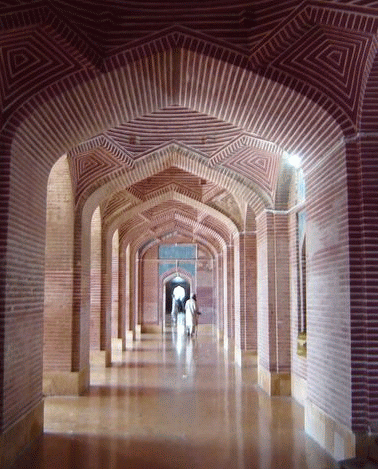
Unlike other mosques, Shah Jahan Mosque has no minarets. Instead of the typical three domes, there is only one main dome in the prayer hall. The ablution pond is not located in the center of the courtyard. Instead, it is in a square courtyard located within the eastern portion of the mosque. The ablution courtyard could be access from an arched opening in the domed entrance chamber but now is accessible only from the aisle of the eastern portion. The mosque is combination of Turkish and local artwork, which is profusely used on tile work in the ceiling decoration of semi domed and domed chambers; as well as in the fillings of interlaced arches.
It would not be wrong to call this mosque as the mosque of domes and arches as one can see a series of lined arches while standing in any one corner. Each arch has a small atop with beautiful mosaic and tile work. In fact no Mogul period mosque is like the Shah Jahan mosque at Thatta, since the Mogul architects digressed from their typical architecture and designed this mosque totally different from those built in Lahore and Delhi in the same period. This is what makes this mosque unique from the rest and worth visiting - and admiring.
|
Related Links: | Shah Jahan Mosque | World Heritage Site | The Grand Mosque | THATTA | |
